*NURSING > HESI MED SURG > 2020-2022 HESI Medical-Surgical LPN/PN Nursing V1 (Keiser University) (All)
2020-2022 HESI Medical-Surgical LPN/PN Nursing V1 (Keiser University)
Document Content and Description Below
2020-2022 HESI Medical-Surgical LPN/PN Nursing V1 (Keiser University) Question 1 The nurse is providing care for a patient who is unhappy with the health care provider’s care. The patien... t signs the Against Medical Advice (AMA) form and leaves the hospital against medical advice. What should the nurse include in the documentation of this event in the patient’s medical record or on the AMA form? 1. Documentation that the patient was informed that he or she cannot come back to the hospital 2. Documentation that the patient was informed that he or she was leaving against medical advice 3. Documentation that the risks of leaving against medical advice were explained to the patient 4. Documentation of any discharge instructions given to the patient 5. Documentation indicating an incident report has been completed Correct Answer: 2,3,4 Rationale 1: It should be clearly documented that the patient was advised and understands that he or she can come back. Rationale 2: It should be clearly documented in the patient’s record and on the AMA form that the patient was advised that he or she was leaving against medical advice. Rationale 3: It should be clearly documented that the patient understands the risks of leaving against medical advice. Rationale 4: The AMA form includes the name of the person accompanying the patient and any discharge instructions given. Rationale 5: Facility policy may require that an incident report be completed, but it must not be referenced in the chart. The patient’s record is a legal document, so the nurse should never document that he or she filed an incident report. Question 2 A nurse documents this statement in a patient’s medical record: “2/25/–, 2235. At 2015 patient awoke suddenly and complained of shortness of air. Pulse oximetry reading was 82% on room air and audible wheezes could be heard.” This documentation meets which documentation guidelines? 1. Documentation is timely 2. Documentation is concise 3. Documentation is objective 4. Documentation includes date and time of entry 5. Documentation is complete and accurate Correct Answer: 2,3,4,5 Rationale 1: The nurse should document as soon as possible after an observation is made or care is provided. The entry was made in the patient’s medical record at least 2 hours after the patient complaint and should be labeled late entry. Rationale 2: This entry describes the situation fully but is concise. Rationale 3: The nurse describes factual events that can be seen, heard, smelled, or touched. It is important to be objective and avoid vague statements that are subjective. Rationale 4: Both the date and the time of the entry are documented. Rationale 5: The nurse should document only facts: what he or she can see, hear, and do. Question 3 A nurse documents the following in a patient’s medical record: “2/1/ , 1500. Patient appears weak and faint. Patient’s skin is moist and cool, vomited bright red blood with clots. Health care provider notified and order received to give 2 u of packed red blood cells if stat Hgb is < 8.0. Pain medication will be given.” This documentation meets which documentation principle? 1. Document objectively. 2. Do not document procedures in advance. 3. Use approved abbreviations. 4. Document changes in patient condition. Correct Answer: 4 Rationale 1: Documentation should be objective and avoid vague statements that are subjective. Only factual occurrences that can be seen, heard, smelled, or touched should be described. The use of the word “appears” is subjective and could be manipulated later should the treatment or judgment be challenged. Rationale 2: The nurse has documented that pain medication will be given. This is documenting in advance. Rationale 3: The Joint Commission has designated the inappropriateness of “u” as an abbreviation. “U” should be written out as “unit(s).” If unsure whether the abbreviation is correct, the nurse should spell out the word; “<” can be misinterpreted, so it should be spelled out as “less than.” Rationale 4: In general, employers as well as state, federal, and professional standards require documentation to include initial and ongoing assessments, any change in the patient’s condition, therapies given and patient response, patient teaching, and relevant statements by the patient. Question 4 A nursing unit has changed its documentation system to documenting by exception. How will this system save time? 1. It eliminates lengthy or repetitive documentation. 2. It allows flexibility and description in the documentation. 3. It allows the reader to easily locate information about a specific problem. 4. It allows for quick and easy retrieval of information. Correct Answer: 1 Rationale 1: Documenting by exception eliminates lengthy or repetitive documentation. Rationale 2: Flexible and descriptive documentation is an advantage of the narrative system. Rationale 3: PIE charting allows easy location of information about a specific problem. Rationale 4: The electronic health record allows for quick and easy retrieval of information. Question 5 A hospital is considering changing its documentation system to reduce the number of medication errors. Which system should the hospital investigate? 1. Problem, intervention, evaluation (PIE) system 2. Electronic medical record 3. Problem-oriented medical record 4. Narrative system Correct Answer: 2 Rationale 1: The PIE system consists of a list of the patient’s problems, interventions taken to alleviate the problems, and evaluation of the patient’s response to the interventions. This system does not have the specific benefit of reducing medication errors. Rationale 2: The electronic medical record decreases errors and allows for the reconciliation of the patient’s medications on admission, daily, and on discharge. Rationale 3: The five components of the problem-oriented medical record are baseline data, a problem list, a plan of care for each problem, multidisciplinary progress notes, and a discharge summary. This system does not have the specific benefit of reducing medication errors. Rationale 4: Narrative documentation does not have the specific benefit of reducing medication errors. [Show More]
Last updated: 1 year ago
Preview 1 out of 52 pages
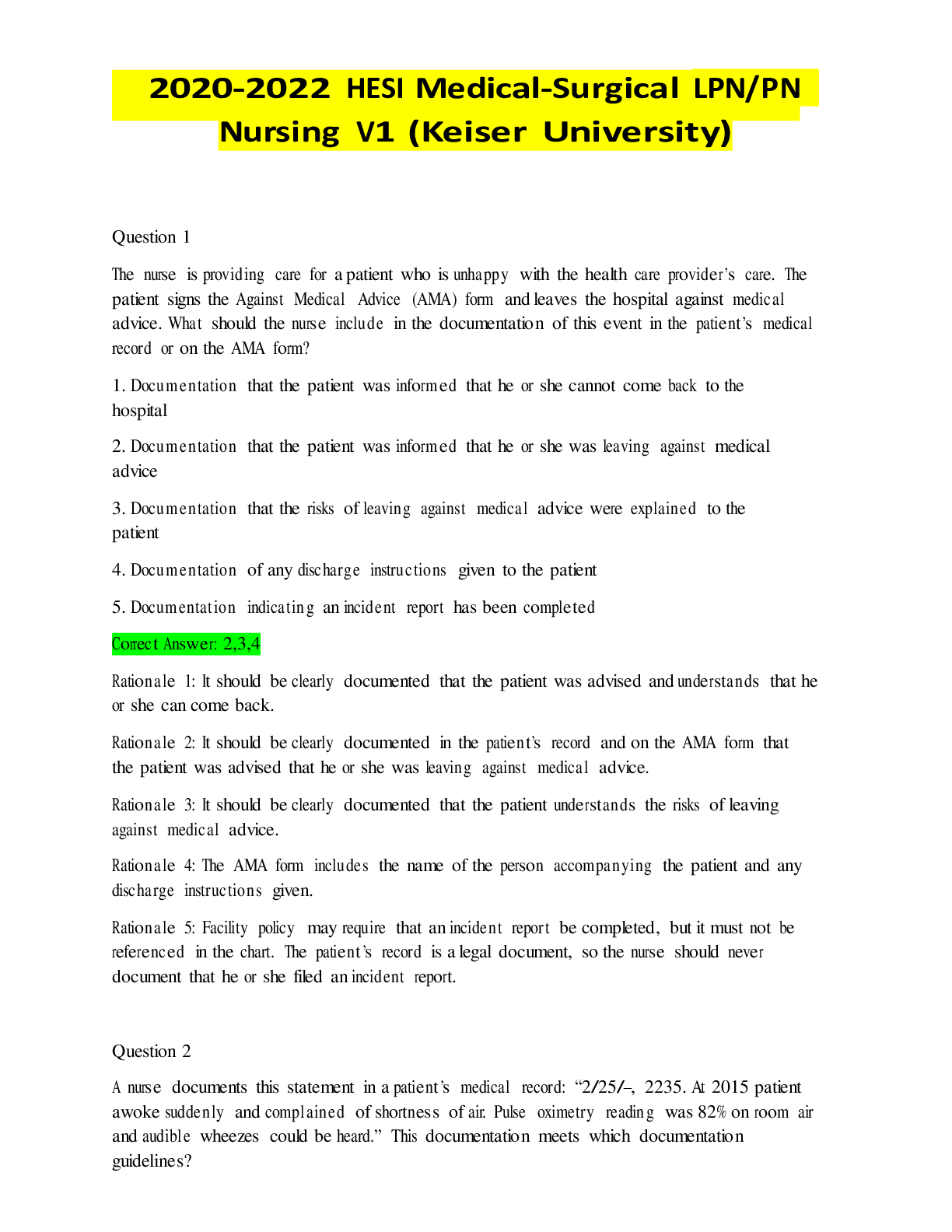
Reviews( 0 )
Document information
Connected school, study & course
About the document
Uploaded On
Sep 04, 2022
Number of pages
52
Written in
Additional information
This document has been written for:
Uploaded
Sep 04, 2022
Downloads
0
Views
44

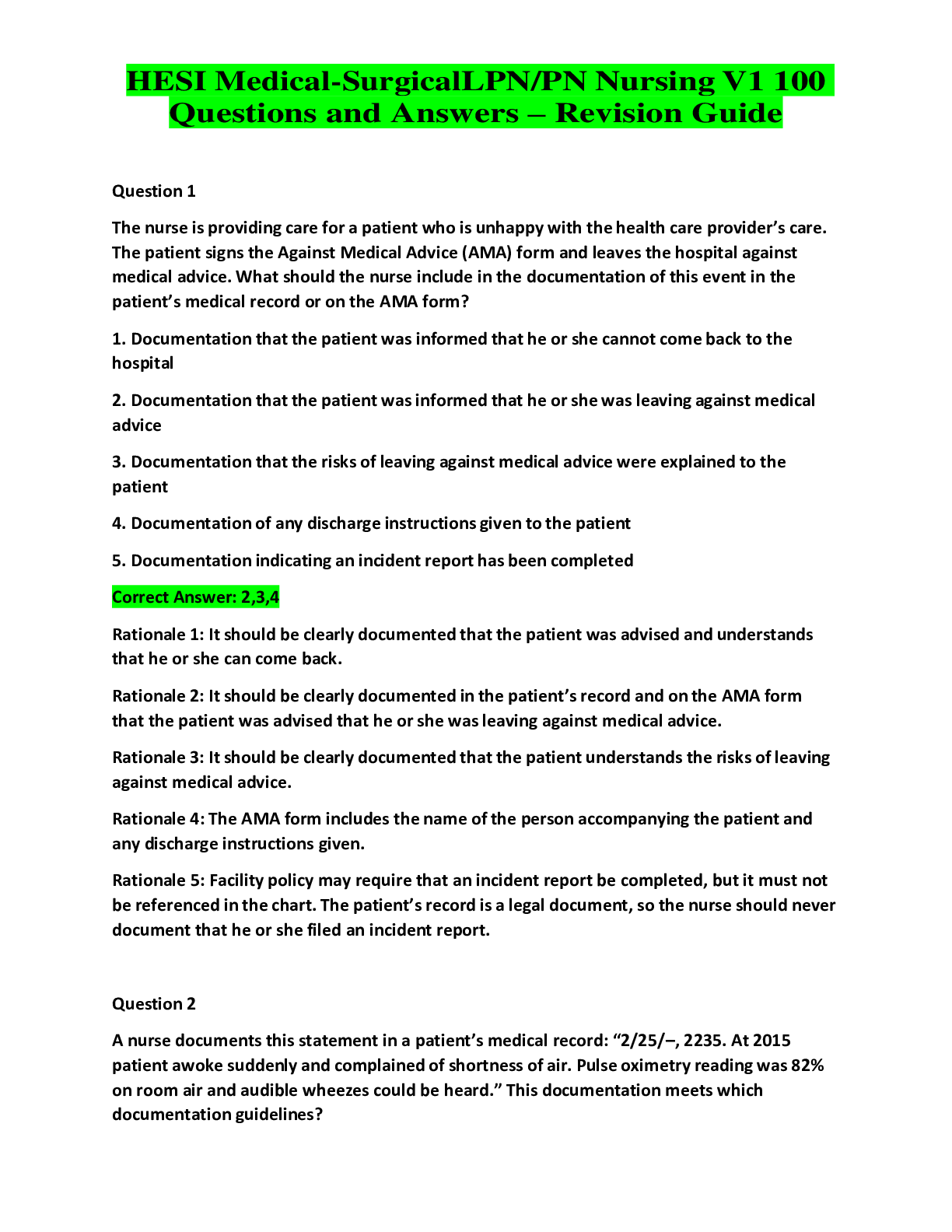

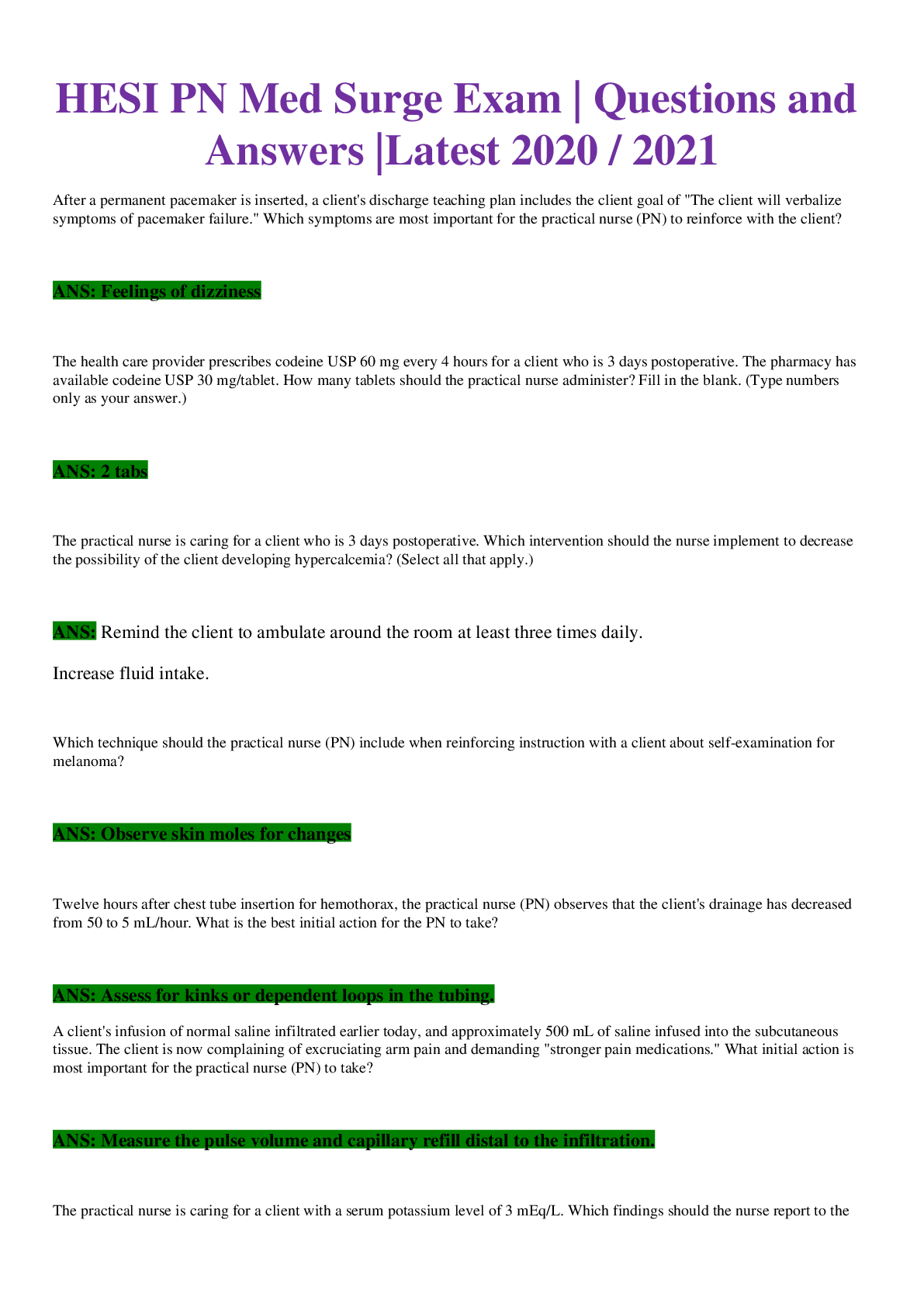

 Test Bank.png)
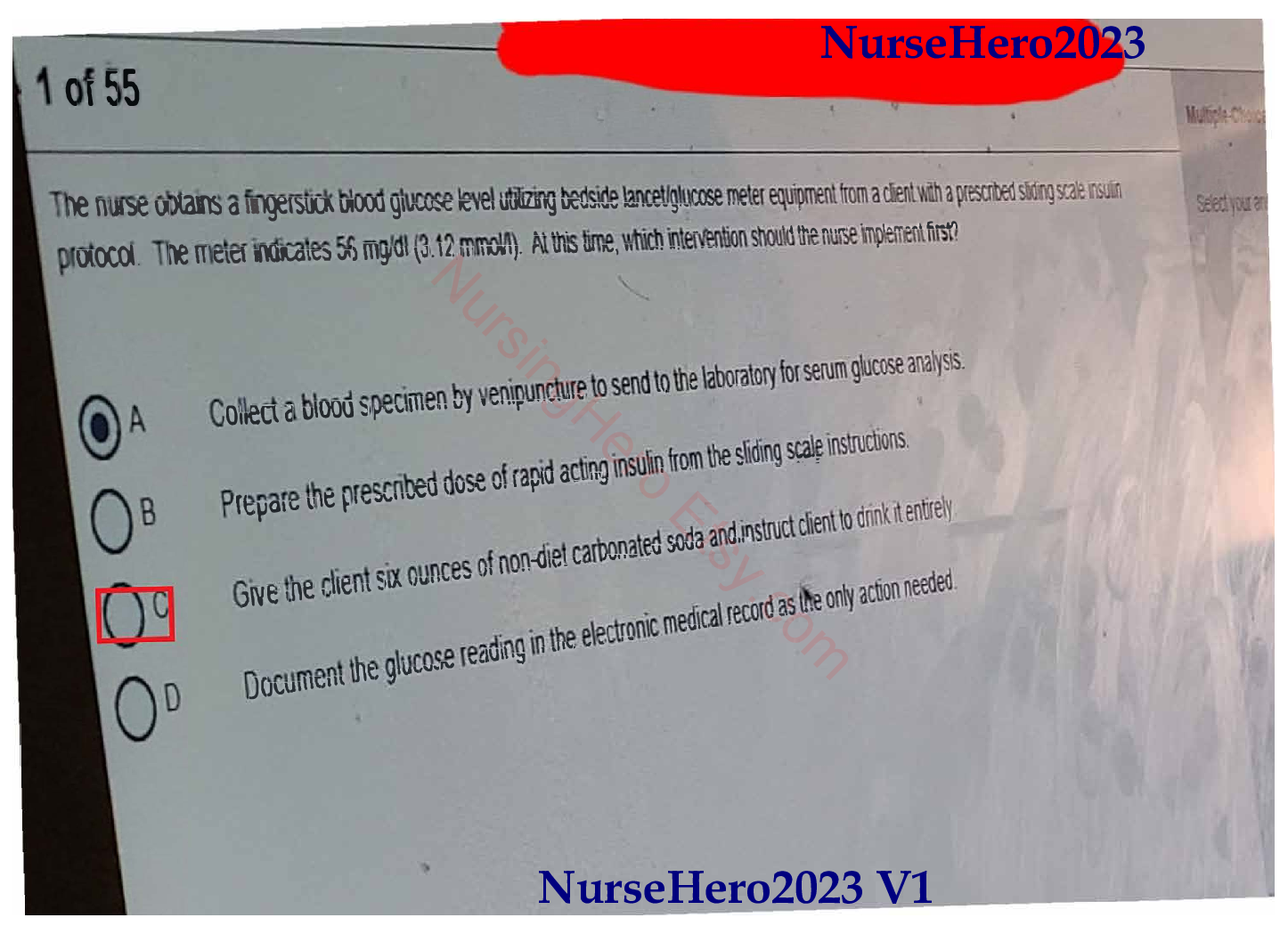

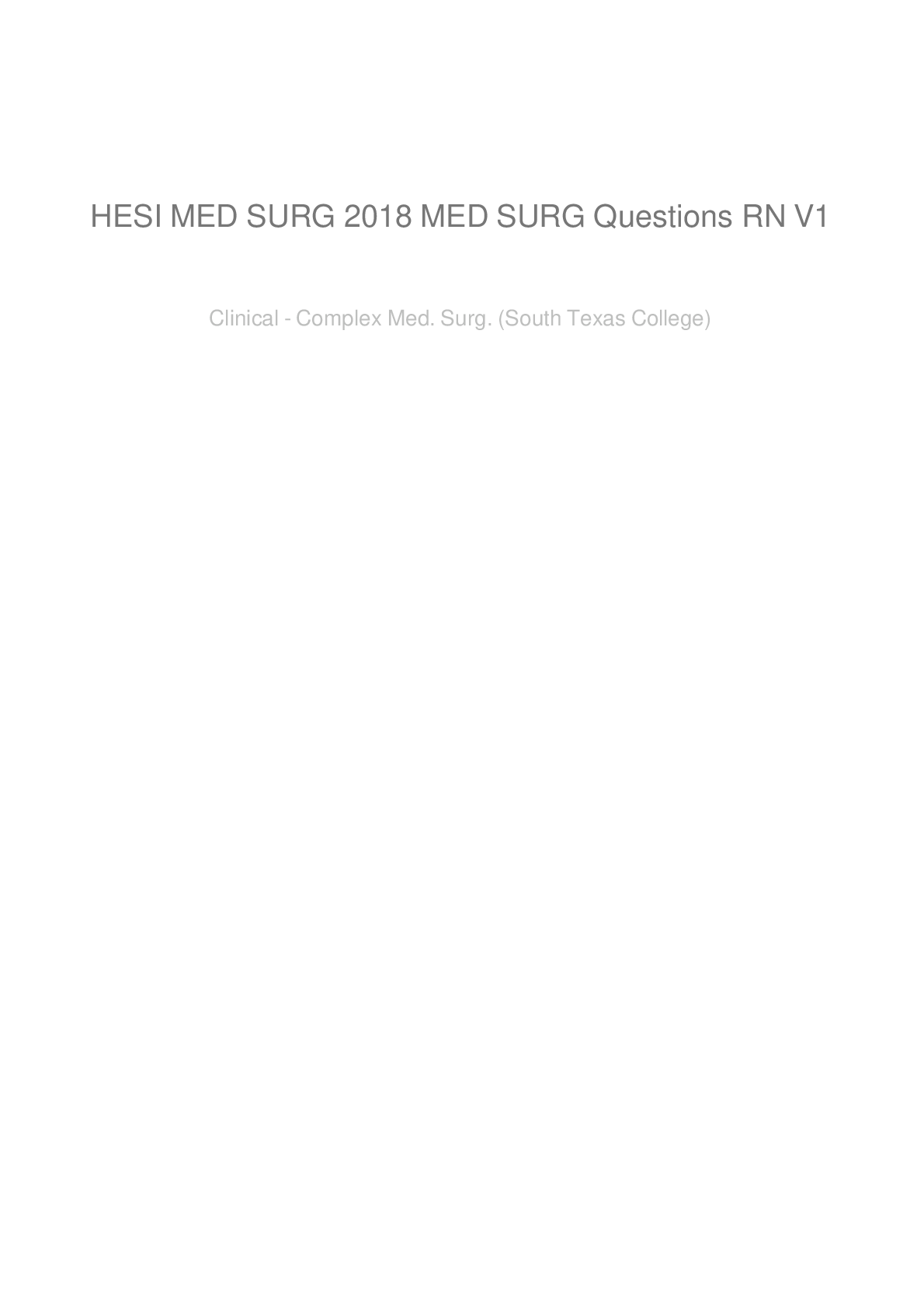
.png)
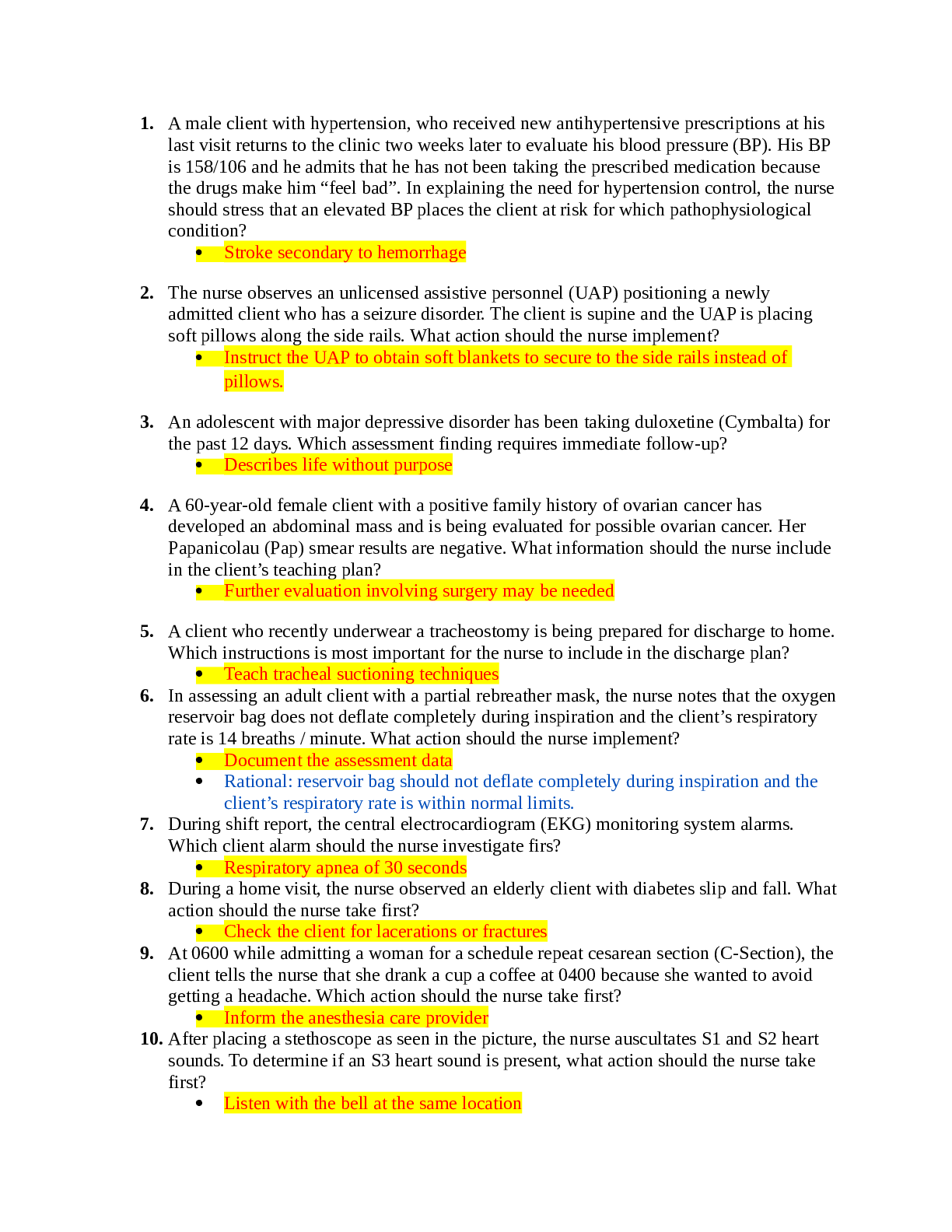
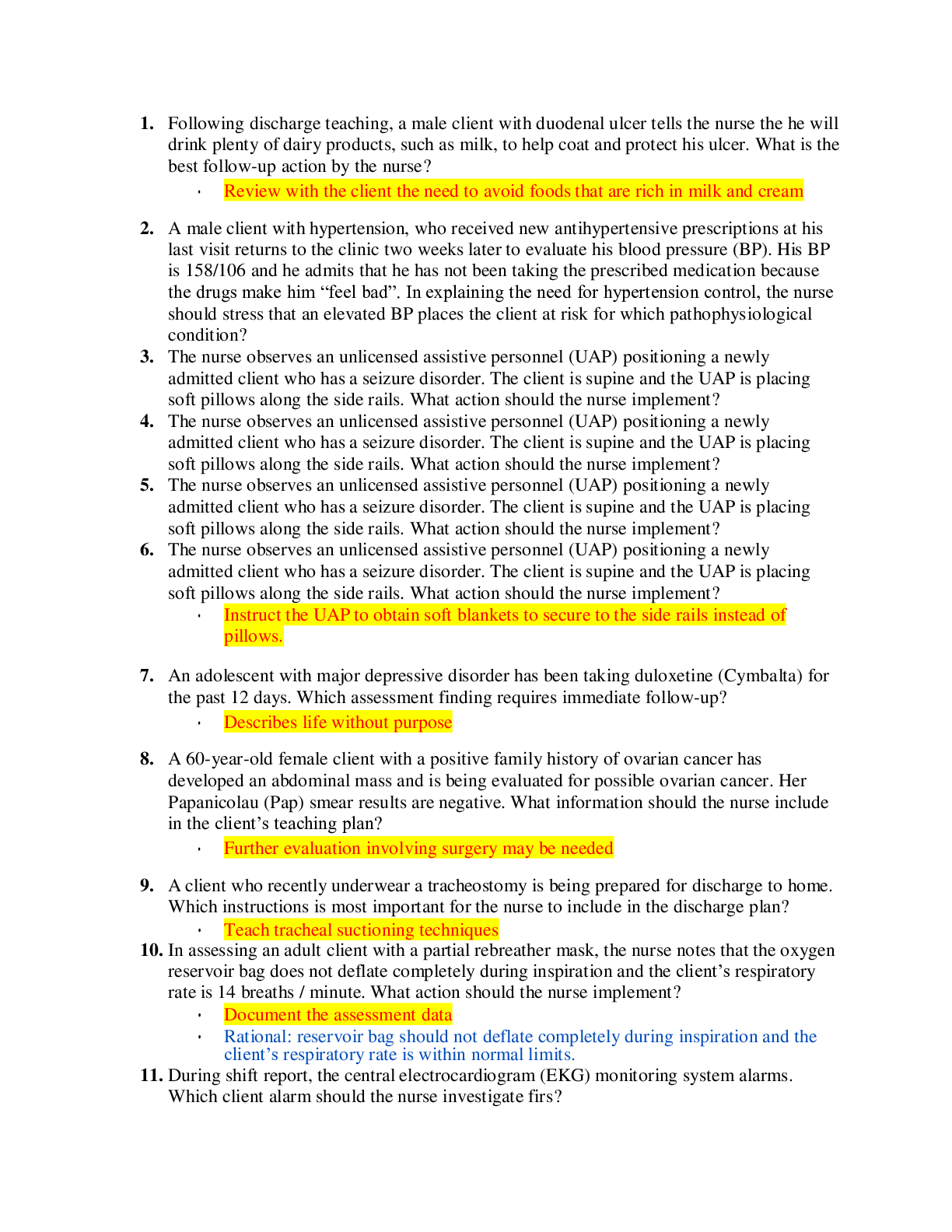
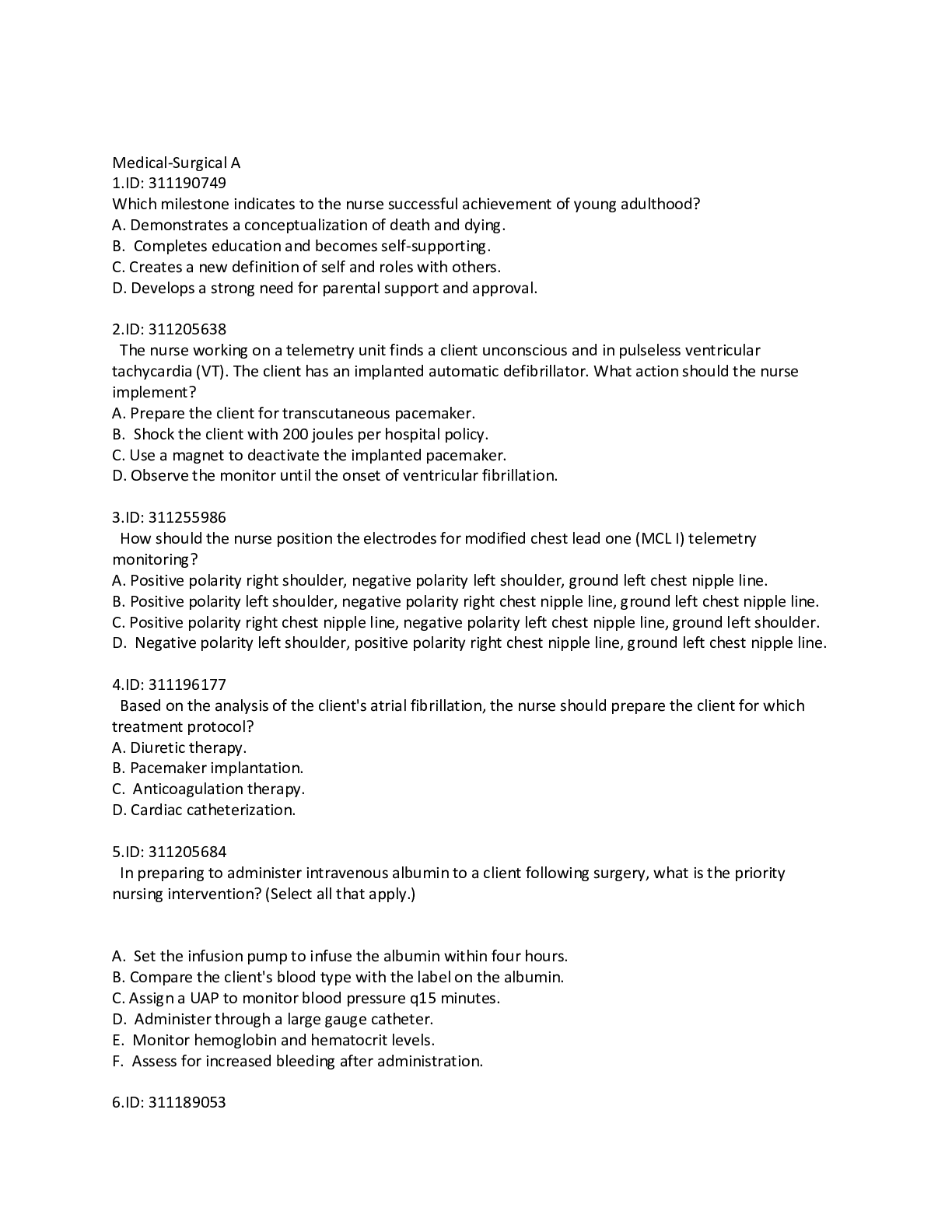

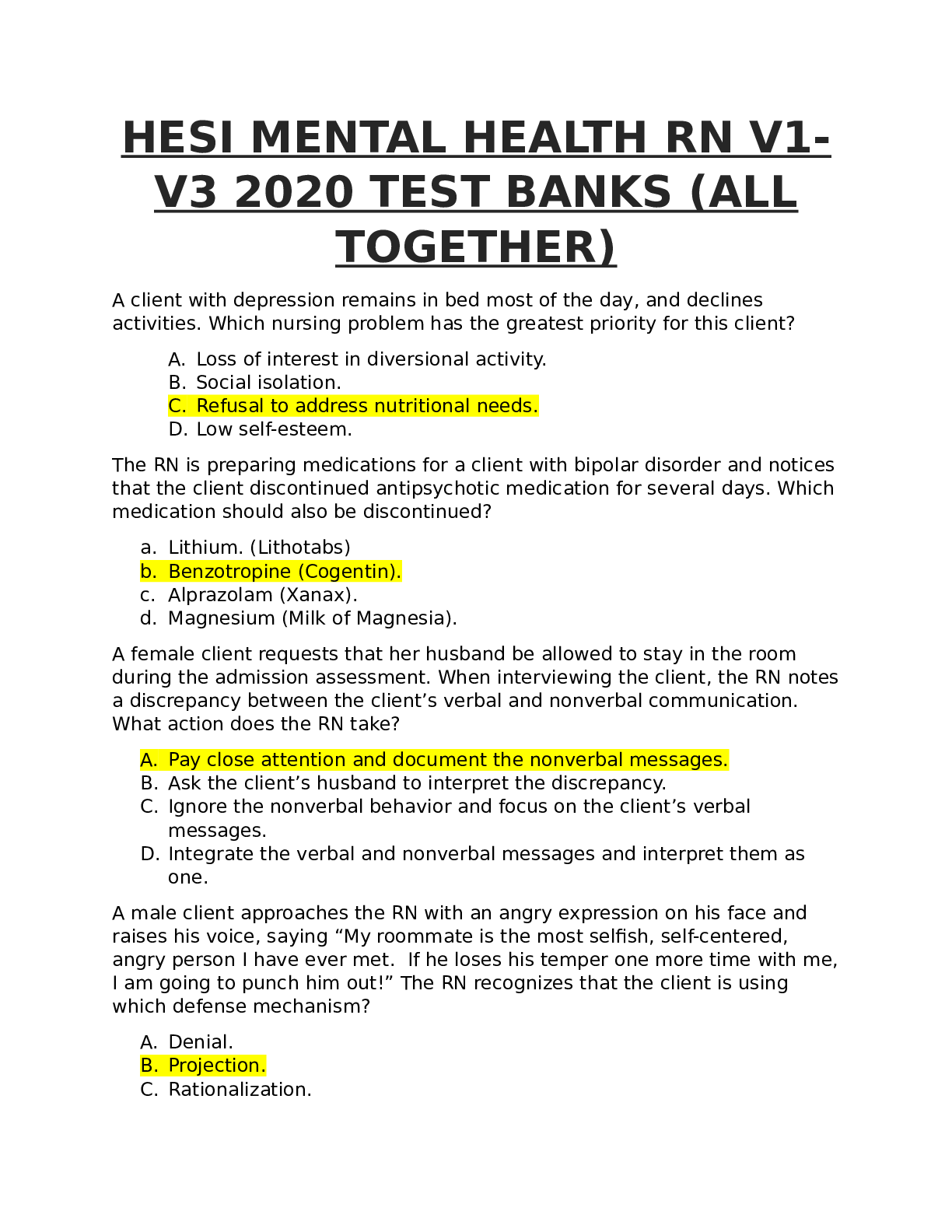
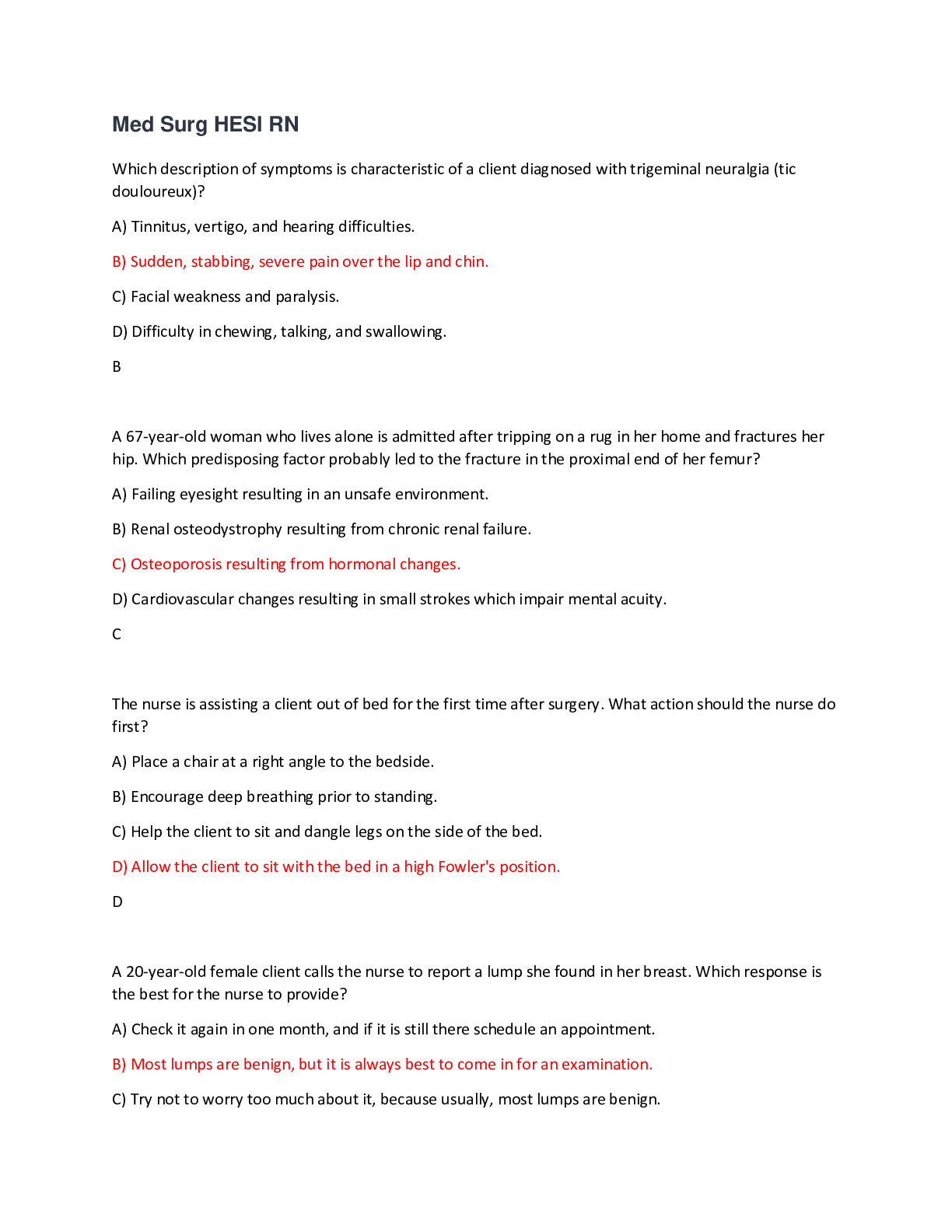
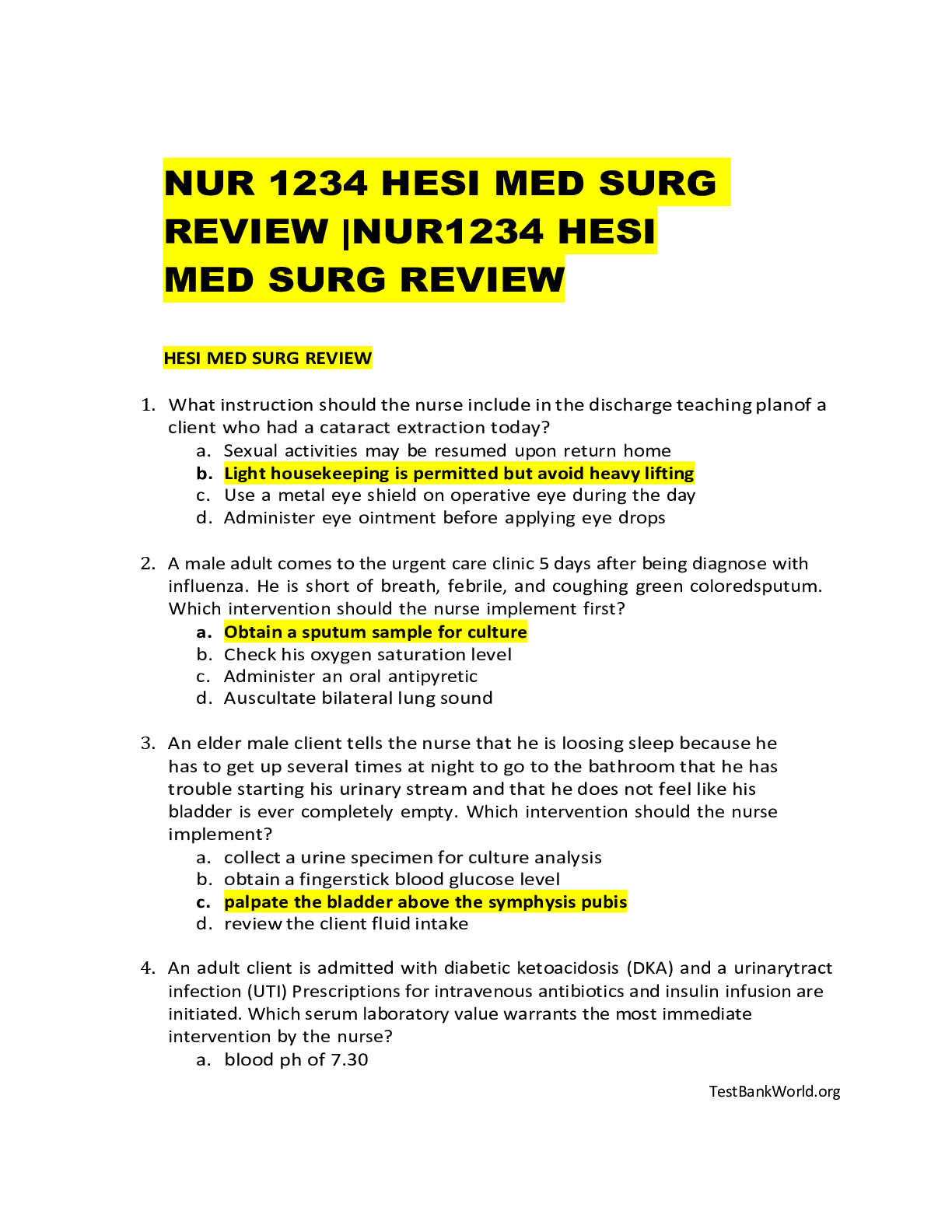


.png)
 Correct Study Guide, Download to Score A.png)

